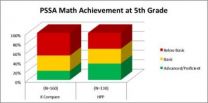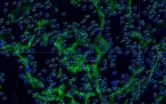(Press-News.org) Andrew Fuligni and his colleagues want to understand the secret life of the American teenager. Their research has examined whether stress in the teen years affects kids' health as adults (it does), whether teens maintain their religious ties and beliefs as adults (they do) and if ethnic minority–based stigmatization affects how they perform in school (it does).
Now the researchers are looking at another big-ticket item for teens: arguments. Specifically, they're examining how arguments with friends at school may spill over and cause arguments at home, along with the reverse -- how verbal fights at home affect things at school.
Reporting in the September–October edition of the journal Child Development, the researchers found that adolescents experienced more arguments with parents or other family members on days in which conflicts with peers took place, and vice versa. Family fights seemed to last longer as well; the effect of family conflict spilled over into peer relationships the next day and two days later, while peer conflict only affected fights at home on the following day.
"Every parent of a teen knows these years can get a little emotional," said Fuligni, a professor of psychiatry at the Semel Institute for Neuroscience and Human Behavior at UCLA. "So when disagreements occur, we wanted to know if there was a transmission of negative emotions between the two groups.
"Adolescents tend to respond with more extreme and negative emotions than do pre-adolescents or adults, probably because it's the time in their lives when they are experiencing multiple transitions that might be stressful," he said, citing such things as puberty, dating and changing schools as examples. "Given this tendency among adolescents, emotional distress might potentially explain this idea of a family–peer spillover of conflict."
The researchers recruited 578 ninth-grade students from three public high schools in the Los Angeles metropolitan area. Ethnicities were mixed: 235 adolescents were from Mexican backgrounds, 172 from Chinese and 171 from European backgrounds. Students completed an initial background questionnaire at school and then completed a diary checklist at the end of each day for 14 days. In it, they recorded their emotions and whether various events had occurred that day, including arguing with parents and friends.
Besides finding there was emotional spillover between the two groups, the researchers also found that the effect of family conflict persisted longer than that of peer conflict. In addition, on days when teenagers argued with parents or other family members, girls experienced more peer conflict than boys. This, the researchers said, suggests that arguing with parents or other family members, as opposed to friends, may be a distinctly more stressful event for girls during this period. Finally, and contrary to the researcher's expectation, the daily family–peer link operated the same across ethnicities.
"The bottom line," said Fuligni, "is that adolescents' interactions in the home and with peers shape each other on a daily basis, at least in part, through emotional distress." ###
Other authors on the study included lead author Grace H. Chung from Seoul National University and Lisa Flook from the University of Wisconsin at Madison. Funding was provided by the Russell Sage Foundation and the National Institute of Mental Health. The authors report no conflict of interest.
The UCLA Department of Psychiatry and Biobehavioral Sciences is the home within the David Geffen School of Medicine at UCLA for faculty who are experts in the origins and treatment of disorders of complex human behavior. The department is part of the Semel Institute for Neuroscience and Human Behavior at UCLA, a world-leading interdisciplinary research and education institute devoted to the understanding of complex human behavior and the causes and consequences of neuropsychiatric disorders.
For more news, visit the UCLA Newsroom and follow us on Twitter.
More insight into the secret life of the American teen
Arguments at school may cause arguments at home, and vice versa
2011-10-10
ELSE PRESS RELEASES FROM THIS DATE:
Kroger Achieves Faster Prescription Filling and Improves Inventory Management with Eyecon Tabletop Automation System
2011-10-10
Kroger Pharmacy, the fifth largest national pharmacy chain, has chosen the Eyecon as the tabletop automation solution approved for use within Kroger pharmacies. The Eyecon, by Avery Weigh-Tronix, improves overall process efficiency, accuracy and safety. The Eyecon is an automated prescription validation, counting and filling system, which not only enhances inventory management by improving filling accuracy, but also increases customer satisfaction.
Kroger, headquartered in Cincinnati, Ohio, offers over 1900 locations and operates under many different banners nationwide, ...
Preschool program improves standardized test scores through grade 5
2011-10-10
Continued participation in the Harrisburg Preschool Program (HPP) has led 5th-grade students to score higher on Pennsylvania System of School Assessment (PSSA) literacy and math tests than peers who have not participated in the HPP program, according to the final evaluation of the HPP initiative by the Prevention Research Center at Penn State.
HPP is a collaborative program involving the Harrisburg School District and Capital Area Head Start, which provides comprehensive, high-quality preschool services to at-risk children in the Harrisburg area.
"This evaluation has ...
Mine-hunting software helping doctors to identify rare cells in human cancer
2011-10-10
ARLINGTON, Va. -- Medical researchers are demonstrating that Office of Naval Research (ONR)-funded software developed for finding and recognizing undersea mines can help doctors identify and classify cancer-related cells.
"The results are spectacular," said Dr. Larry Carin, professor at Duke University and developer of the technology. "This could be a game changer for medical research."
The problem that physicians encounter in analyzing images of human cells is surprisingly similar to the Navy's challenge of finding undersea mines.
When examining tissue samples, doctors ...
Exlar's Defense Industry Brochure Details Electromechanical Actuator Capabilities and Industry Application Suitability
2011-10-10
Exlar announces its Defense Industry Brochure is now available in print form or by download from their website. Manufacturing high performance electromechanical actuators and brushless servo motors, Exlar provides the ideal motion control solutions for the industry's defense vehicles, vessels and machinery. This brochure details how Exlar's actuators and servo motors provide the performance capabilities and application compatibility necessary for demanding defense applications.
Designed for durability and longevity, compact electromechanical actuators with innovative ...
Photo gallery: Applied Optics special issue on 'Light and Color in the Open Air'
2011-10-10
WASHINGTON, Oct. 6 -- Nature creates countless stunning optical phenomena. Some of the most familiar are rainbows, fog bows, coronas, sprites, and mirages, but other, more complex and often more compelling phenomena are also witnessed and imaged, though far less frequently and often under challenging conditions that require great patience. When captured as images, these phenomena also reveal important scientific insights into the properties of light under normal and extreme natural conditions. To highlight research in this area, the editors of the Optical Society's (OSA) ...
Iowa State researchers help detect very-high-energy gamma rays from Crab pulsar
2011-10-10
AMES, Iowa -- Iowa State University astrophysicists are part of an international team that unexpectedly discovered very-high-energy gamma rays from the already well-known Crab pulsar star.
The team's findings are published in the Oct. 7 issue of the journal Science.
"This is the first time very-high-energy gamma rays have been detected from a pulsar - a rapidly spinning neutron star about the size of the city of Ames but with a mass greater than that of the sun," said Frank Krennrich, an Iowa State professor of physics and astronomy and a co-author of the paper.
The ...
Lottery Player Wins 65 Million Euro SuperEnalotto Jackpot
2011-10-10
After several months waiting for a top prize win, the massive SuperEnalotto jackpot was finally won by an anonymous player from the Italian town of Gubbio. This being said, let's discuss the multi-million Euro jackpot, along with the winning numbers from last week's SuperEnalotto drawings:
The winning lottery numbers were 4, 6, 27, 37, 45, and 58. The "jolly" bonus number was 84.
SuperEnalotto lottery draws take place in Rome, Italy, on Tuesday, Thursday and Saturday evenings. The odd of winning the SuperEnalotto jackpot is 1:622,614,630.
The previous ...
Archaeologist argues world's oldest temples were not temples at all
2011-10-10
Ancient structures uncovered in Turkey and thought to be the world's oldest temples may not have been strictly religious buildings after all, according to an article in the October issue of Current Anthropology. Archaeologist Ted Banning of the University of Toronto argues that the buildings found at Göbekli Tepe may have been houses for people, not the gods.
The buildings at Göbekli, a hilltop just outside of the Turkish city of Urfa, were found in 1995 by Klaus Schmidt of the German Archaeological Institute and colleagues from the Şanlıurfa Museum in Turkey. ...
Ionic liquid catalyst helps turn emissions into fuel
2011-10-10
CHAMPAIGN, Ill. -- An Illinois research team has succeeded in overcoming one major obstacle to a promising technology that simultaneously reduces atmospheric carbon dioxide and produces fuel.
University of Illinois chemical and biomolecular engineering professor Paul Kenis and his research group joined forces with researchers at Dioxide Materials, a startup company, to produce a catalyst that improves artificial photosynthesis. The company, in the university Research Park, was founded by retired chemical engineering professor Richard Masel. The team reported their results ...
Somoto Releases its 2nd Generation Software Monetization Tools
2011-10-10
Somoto, a company providing monetization solutions to the software developers community, has officially release today its 2nd generation of monetization tools directed at software developers and publisher. Company prepares for extended growth during the next twelve months with new product launches and dozens of new partners joining its network.
Somoto was founded by two entrepreneurs who recognize software developers constant need to improve software functionality, increase revenues and boost distribution. The founders, Ben Garrun and Eyal Yaakov bring a combined 25 ...
LAST 30 PRESS RELEASES:
Scalable and healable gradient textiles for multi‑scenario radiative cooling via bicomponent blow spinning
Research shows informed traders never let a good climate crisis go to waste
Intelligent XGBoost framework enhances asphalt pavement skid resistance assessment
Dual-function biomaterials for postoperative osteosarcoma: Tumor suppression and bone regeneration
New framework reveals where transport emissions concentrate in Singapore
NTP-enhanced lattice oxygen activation in Ce-Co catalysts for low-temperature soot combustion
Synergistic interface engineering in Cu-Zn-Ce catalysts for efficient CO2 hydrogenation to methanol
COVID-19 leaves a lasting mark on the human brain
Scientists use ultrasound to soften and treat cancer tumors without damaging healthy tissue
Community swimming program for Black youth boosts skills, sense of belonging, study finds
Specific depressive symptoms in midlife linked to increased dementia risk
An ‘illuminating’ design sheds light on cholesterol
Who is more likely to get long COVID?
Study showcases resilience and rapid growth of “living rocks”
Naval Research Lab diver earns Office of Naval Research 2025 Sailor of the Year
New Mayo-led study establishes practical definition for rapidly progressive dementia
Fossil fuel industry’s “climate false solutions” reinforce its power and aggravate environmental injustice
Researchers reveal bias in a widely used measure of algorithm performance
Alcohol causes cancer. A study from IOCB Prague confirms damage to DNA and shows how cells defend against it
Hidden viruses in wastewater treatment may shape public health risks, study finds
Unlock the power of nature: how biomass can transform climate mitigation
Biochar reshapes hidden soil microbes that capture carbon dioxide in farmland
Reducing saturated fat intake shows mortality benefit, but only in high-risk individuals
Manta rays create mobile ecosystems, study finds
Study: Mixed results in using lipoic acid to treat progressive multiple sclerosis
Norbert Holtkamp appointed director of Fermi National Accelerator Laboratory
New agentic AI platform accelerates advanced optics design
Biologists discover neurons use physical signals — not electricity — to stabilize communication
Researchers discover that a hormone can access the brain by hitchhiking
University of Oklahoma researcher awarded funding to pursue AI-powered material design
[Press-News.org] More insight into the secret life of the American teenArguments at school may cause arguments at home, and vice versa






